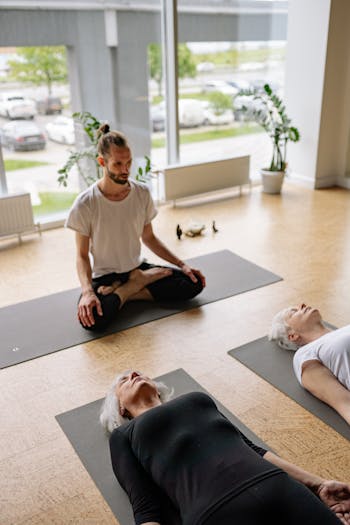Embarking on the journey to become a yoga teacher is both an exciting and transformative endeavor. Yoga’s increasing global popularity has inspired many to share its profound benefits with others, but this career path requires much more than just physical prowess. It involves a deep commitment to understanding yoga’s rich philosophy, mastering diverse techniques, and embracing personal growth. This comprehensive guide offers a detailed, step-by-step approach to becoming a certified yoga instructor, providing you with the tools and insights needed to embark on this fulfilling career and make a positive impact on your students’ lives.
 Understanding the Role of a Yoga Teacher
Understanding the Role of a Yoga Teacher
Before diving into teacher training, it’s crucial to grasp the multifaceted role of a yoga teacher. As a yoga instructor, you are not just leading students through a series of physical postures but also facilitating their mental and emotional well-being. This role demands a profound understanding of yoga’s philosophy, anatomy, and the ability to communicate complex concepts in a relatable and accessible manner. A yoga teacher must be skilled in creating a supportive and inclusive environment that accommodates various levels of experience, from beginners to advanced practitioners. Your ability to guide students through their journeys, address their unique needs, and inspire them to cultivate a deeper connection with themselves is fundamental to your role.
Choosing the Right Yoga Teacher Training Program
Selecting a yoga teacher training (YTT) program is a pivotal step in your journey. It is essential to choose a program that is accredited by a reputable organization such as the Yoga Alliance, as this ensures adherence to established industry standards and practices. When evaluating potential programs, consider the curriculum offered, the expertise of the instructors, the location, and the duration of the training. Many programs offer specializations in various styles of yoga, such as vinyasa, hatha, or ashtanga, so select one that aligns with your personal interests and career goals. Additionally, look for programs that offer practical teaching experience and support in building your teaching skills. A well-rounded and accredited program will provide you with the knowledge and confidence to teach effectively and professionally.
 Navigating Certification and Continuing Education
Navigating Certification and Continuing Education
Once you have completed your training program, obtaining certification is the next step to officially teach yoga. Certification from a recognized organization, such as Yoga Alliance, is often a requirement for teaching at established studios and can enhance your credibility as a teacher, but don’t forget your practical professional indemnity insurance for yoga teachers as well. Additionally, the field of yoga is continuously evolving, and staying current with new techniques, trends, and research is essential. Engaging in continuing education through workshops, advanced training, and professional development opportunities will help you expand your knowledge and skills.
Committing to Personal Practice
A commitment to your yoga practice is a crucial aspect of becoming an effective yoga teacher. Regularly practicing yoga deepens your understanding of its principles and helps you internalize the physical and mental aspects of the practice.
 This personal growth is essential for teaching, as it enables you to empathize with your students and relate to their experiences. Make it a priority to dedicate time each day to practice, explore different styles, and refine your technique. Engaging in a variety of practices will help you discover your unique teaching voice and approach. The insights gained from personal practice will not only enhance your teaching abilities but also foster a deeper connection with your students, allowing you to guide them more effectively on their journeys.
This personal growth is essential for teaching, as it enables you to empathize with your students and relate to their experiences. Make it a priority to dedicate time each day to practice, explore different styles, and refine your technique. Engaging in a variety of practices will help you discover your unique teaching voice and approach. The insights gained from personal practice will not only enhance your teaching abilities but also foster a deeper connection with your students, allowing you to guide them more effectively on their journeys.
Gaining Teaching Experience
Gaining practical teaching experience is a vital step in your development as a yoga instructor. Start by offering classes to friends, family, or community groups, and consider volunteering at local studios or wellness centers. This hands-on experience will help you refine your teaching style, manage different class dynamics, and address the diverse needs of students. Observing and learning from experienced teachers can provide valuable insights into effective teaching methods and class management techniques. Seek constructive feedback from mentors and peers to continually improve your skills.
Becoming a yoga teacher is a rewarding journey that involves much more than mastering physical postures. By following these steps, you will be well-prepared to inspire and guide others on their yoga journeys. Your dedication and passion for the practice will enable you to make a meaningful and lasting impact on the lives of your students, helping them to achieve greater physical, mental, and emotional well-being.





